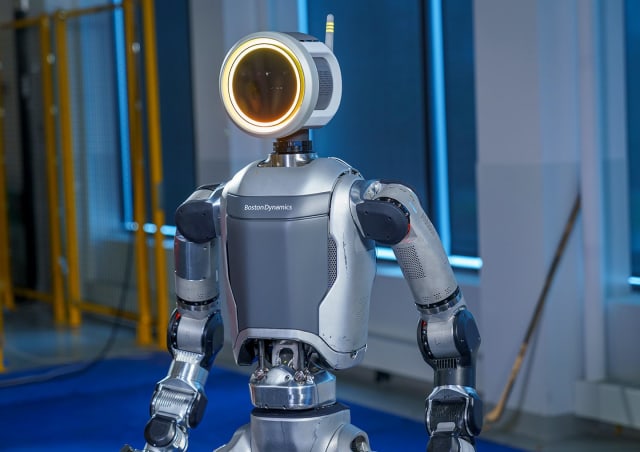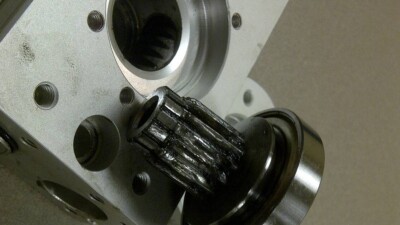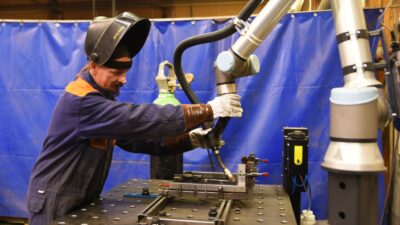The shift from hydraulic to electric and its new partnership with automaker Hyundai is part of Boston Dynamics’ commercialization efforts.

For years, one company has dominated the pop science news cycle with its shockingly capable, eerily lifelike humanoid robots. This week, Boston Dynamics has announced a shift from hydraulic to electric, in the interest of making the Atlas humanoid robot more applicable for commercial applications. In the same breath, the company has announced a customer partnership with Hyundai to test and iterate the applications.
According to the press release, end effectors are a new focus for Atlas, with the company “exploring several new gripper variations to meet a diverse set of expected manipulation needs in customer environments.”
Atlas joins the Boston Dynamics Spot and Stretch robots as commercial products to come out of Boston Dynamics’ impressive R&D efforts.
Atlas—a timeline
1992 – Marc Raibert and Nancy Cornelius found Boston Dynamics, based on his work in the Leg Laboratory, with MIT and Carnegie Mellon.
2009 – PETMAN (Protection Ensemble Test Mannequin) unveiled, a walking humanoid robot designed to test PPE.
2013 – Atlas unveiled, with a video showing the humanoid robot being hit by objects and balancing on one leg.
2016 – New version of Atlas released, with video showing the robot walking freely over different outdoor terrain, doing backflips, and generally freaking everyone out. Like its predecessor, this robot is hydraulically actuated.
2017 – Update video, with Atlas jumping on platforms and boxes, and doing a wider range of dynamic movements, such as jumping while turning 180 degrees.
2018 – Update video shows Atlas running outdoors over uneven terrain.
2019 – Update video shows Atlas performing a wide range of gymnastic maneuvers, including flips, turns, leaps and somersaults.
2021 – The company releases an update video showing Atlas robots performing a parkour course, including running up and down stairs, crossing a balance beam, and performing broad jumps. According to a blog article released at the time, while backflip skills may never be valuable in a commercial setting, the series of athletic update videos released in the past years have been in the interest of developing commercial applications, because, “If robots can eventually respond to their environments with the same level of dexterity as the average adult human, the range of potential applications will be practically limitless.” By setting goals based on whole-body movements, Boston Dynamics is able to drive hardware and software innovation.
2024 – Electric Atlas unveiled, with the retirement of the hydraulic Atlas.
Why is Boston Dynamics developing humanoid robots, anyway?
According to the company, Boston Dynamics has focused on humanoid robots because of the bipedal platform’s ability to balance and move dynamically, in order to be able to navigate real-world challenging terrain. In addition, the humanoid structure can naturally navigate a world built for humans (benchtops, machines, doorknobs, wheelbarrows, etc.)
Great news for those who revel in the uncanny, ‘creepy’ factor as we watch the development of Atlas: With the new electric platform, Boston Dynamics has stated: “Atlas may resemble a human form factor, but we are equipping the robot to move in the most efficient way possible to complete a task, rather than being constrained by a human range of motion. Atlas will move in ways that exceed human capabilities.”
Will Atlas take my job?
Maybe, but only if your job is dull, dirty, or dangerous. Consistent with the message across the entire robotics industry, industrial robots don’t necessarily take jobs from people, they take over certain tasks, freeing up workers to do other tasks. For more on this phenomenon, check out https://www.engineering.com/story/robotics-innovation-is-the-key-to-re-shoring-the-trillion-dollar-apparel-manufacturing



